English Heritage.
There are diverse things to see on this site: the great medieval castle built by Henry II, the recent re-creation of a medieval castle interior, the church, the Roman lighthouse tower, the Medieval tunnels under the castle, the Napoleonic tunnels in the cliff, and the associated WWII tunnels housing an underground hospital etc, not to mention the cliff-top Admiralty Look-out.
The castle, for once, is a building rather than a ruin, and the recreation of the medieval interior furnishings is interesting. The bright primary colours somehow remind me of a child’s poster paint box. The audio-visual projections using actors are also great fun. The Roman lighthouse tower beside the church looks weather-worn, but it’s amazing that it’s still standing. There is plenty of interest in the cliff-side tunnels which are full of WWII exhibits. There are also great views of the Channel and Dover Harbour.
The Castle could be an all-day visit, but there are some other military relics in the area, such as the Western Heights.
De Grey Mausoleum, Beds.
English Heritage.
Attached to a small church in a not very interesting village is a remarkable mausoleum, housing a sequence of 17 sculpted and effigies monuments, spanning nearly three centuries (1615-1899), to the De Grey family of Wrest Park.
These are well worth seeing, but your visit requires a bit of preparation. The mausoleum is kept locked, with a keyholder in the village. You might imagine that the keyholder’s house would be next to the church, but it wasn’t – it was a car drive away at the other end of the village. You are advised to phone the keyholder in advance (when I went to the house I’m almost sure the keyholder was expecting someone else 🙂 ) There is an audio tour (not available on site) which you can download. The lock on the mausoleum gate was awkward, but will open if you twist and pull in the right order.
Botallack Count House, Cornwall
National Trust.
This mining administration building does not rate an entry in the National Trust handbook, but is an interesting old house, now used by the NT as an exhibition and information centre, where you can collect useful maps and trail guides. If you park carefully in the car park, you can sit in your car and watch ships go by for as long as you like.
Levant Mine and Beam Engine, Cornwall
National Trust.
On a cliff-top site sits an old beam engine in its original engine house, still in steam. On the same site are a small museum, a film about the mine, and the top of the shafts. By the car park is a small piece of underground mine tunnel that you can walk through. At varying distances are other relics of mining. The Botallack Count House (NT) is on the clifftops nearby, as are other various engine house ruins and ore processing floors.
This is a great site that in summer overlooks a blue sparkling sea. Indoors you can experience the sound and smells of the old engine in steam-powered motion – the only beam engine in the world still in steam on its original site. Outside, you can explore a landscape littered with mining ruins for as long as you like, or just sit and watch ships go by.
Less than a mile away is the Geevor mine (see separate entry) and the Botallack Count House is a mile or so in the opposite direction.
Cornish Mines and Engines – Pool
National Trust.
The National Trust has several more or less working Cornish mining engines in its care. At Pool, Cornwall, at the heart of the Cornish Mining World Heritage Site, are two great beam engines, preserved in their towering engine houses. The pumping engine on the main site is one of the biggest beam engines in the world, with a 90” cylinder. On the other side of the A3047 is another site, with the great beam of the Michell’s Shaft winding engine poking out of the side of the engine house. Both engines can be seen in motion from time to time, driven by electric auxiliary motors. The main site, with a museum, audio-visual, and walk-through of various buildings, has a lot to see besides the engine.
When visiting, you’ll find that you can park outside the Michell engine house on an area of gravel, and later drive across the road to the far end of the Morrisons’ car park and the larger site.
See also ‘Levant Mine and Beam Engine’
Apethorpe Hall, Northants.
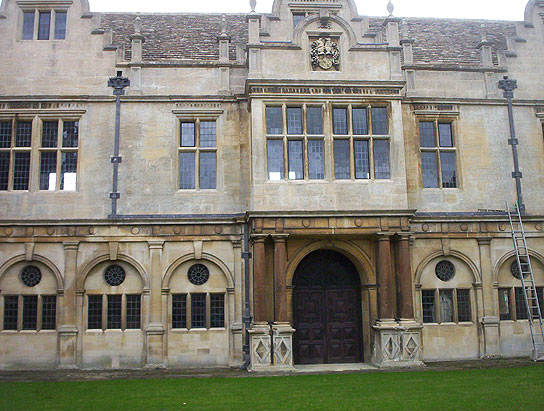
Apethorpe Hall is a huge Jacobean mansion, built around three courtyards. Viewed from the village side, the house is a great length of pale stone, straggling across one’s line of view like some beached stone ship. Close to, and inside the first courtyard, the quality of the architecture is evident. Inside, there are some interiors considered of national importance, and some interesting plasterwork and woodwork, including a rare Jacobean staircase.
English Heritage bought this place several years ago, after it had been neglected by an absentee owner, and spent several million pounds to make the roofs watertight and stop the building from falling down. The interiors remain in need of total refurbishment.
It was hoped that Apethorpe could be sold on to a private owner with bottomless pockets, but so far there have been no takers, and there has been whining from the tabloid press about the waste of public money. It is unfortunate that the last long-term owner of the house moved to an adjoining property, left it with no access except for a narrow village road, and planted a line of fast-growing trees to block out the view of the countryside.
On the far side of the house are gardens which have been well kept up, and a view across the gardens towards the house gives the illusion of a fine house still in its prime.
If you want to see Apethorpe for yourself, keep a sharp lookout for notice of the guided tours that take place on limited dates during the summer months. There is a fee for these.
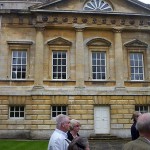

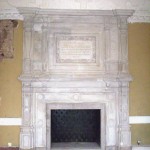
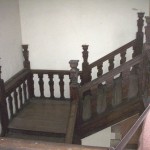
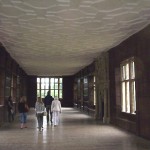
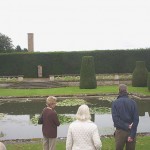
Royal Engineers Museum, Chatham, Kent
The museum contains exhibitions and displays about military engineering. There are also vast reserve collections for researchers. FYI military engineers build camps and fortifications, dig tunnels etc.
On the day I visited there was a progamme of re-enactments before the front of the building – soldiers attacking, defusing bombs etc. Interesting, but a bit of a distraction from trying to get round the four sides of the galleries and see the exhibits.
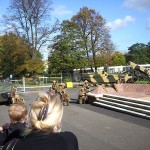
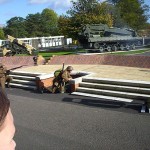
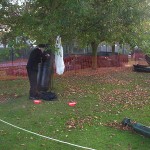
RAF Cosford, Shropshire

Note the unique display of three V-bombers in the Cold War hall. Admission is free, but there is a charge for car parking. Visitors are expected to ‘check in’ via the visitor centre building.
I revisited in 2023.


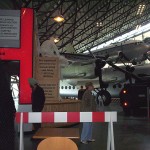

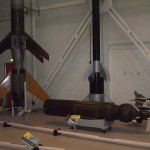








National Maritime Museum, Falmouth, Cornwall
The Museum is housed in a modern purpose-built building on the waterside in Falmouth. Internally it is divided into a number of “zones” containing permanent or temporary exhibitions. Besides what’s on display, there are large archives and reserve collections. Unsurprisingly, the museum contains quite a lot of boats, and some more small craft of historic interest are moored at a pontoon outside. There is also a glass-walled tidal room in the basement when at the right state of tide one can see fish outside. There is a section of Cornish-related materials.
There is plenty to look at, though it can be a challenge to find one’s way around or, for instance, locate the walkway to the external pontoon. I remember the basement where I tried to photograph some fish through the glass wall. A museum visit can occupy several hours.
Parking nearby can be expensive. However if you park at the Ponsharden park + ride, you can take the “Park and Float” = parking + a boat trip to the quay near the Maritime Museum, qualifying you for discounted entry.
Also in Falmouth: Pendennis Castle.
Antony, Cornwall
National Trust.
The house, built in its present form between 1718-24, stands on a peninsula near the Tamar estuary. It is a charming and modest house, not particularly large, but the furnishings and the collection of portraits are of exceptional quality. The landscaped grounds include formal and woodland gardens.
I remember the house had some modern sculpture in the grounds. The house was also used as a set for the recent “Alice in Wonderland” movie.
